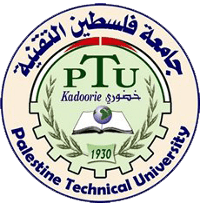Please use this identifier to cite or link to this item:
https://scholar.ptuk.edu.ps/handle/123456789/148 cc-by
| Title: | TECHNICAL EVALUATION AND OPTIMIZATION OF WATER TRETMENT PLANT IN JERICHO |
| Authors: | Nawahda, Amin Ismael |
| Issue Date: | 21-Jun-1999 |
| Publisher: | Birzeit University |
| Citation: | Nawahda, Amin Ismael (1999). TECHNICAL EVALUATION AND OPTIMIZATION OF WATER TRETMENT PLANT IN JERICHO. Birzeit University |
| Abstract: | Since 1956 when Jericho water treatment plant (JWTP) was established, this plant produces around 500 cubic meters of fresh drinking water per day for more than 5000 inhabitants living in Aqbat-jabr camp. Water springs at wadi-qilt are considered the main raw water supply for the JWTP. JWTP operates properly in summer time under poor management and lack of maintenance. The present treatment process entails slow sand filtration and disinfection process. In rainy days the influent fecal coli forms are about 800-colonies/100 ml, which are significantly above those recommended by the WHO and the Palestinian standards for drinking water. The turbidity is more than 30 NTU; extensive growth of algae in the feeding open canal and in the slow sand filters is visible. The water of wadi-qilt springs is polluted while flowing in the open canal more than 13 km long to JWTP. From 1996 to 1997, a few incidents of waterborne diseases were reported as a result of inadequate filtration and interruption of the process of the disinfection. JWTP is the only source of drinking water for Aqbat-jabr but the failure of the treatment process at JWTP in water time forces the people of Aqbat-jabr to use another water supply from the Israeli water company (MEKKORTH). The supplied quantity of water by MEKKORTH is insufficient and also it is more expensive than the water supplied by JWTP. Therefore the major objective of this study is to identify the means and measures for establishing a water system under the conditions of water scarcity so that the JWTP can confront the pollution, especially during rainy days, which causes fecal coli forms, higher turbidity, and algae growth. The results of the analysis conducted on the experimental model of slow sand filter (SSF) indicate that the existing water treatment plant must be modified with the addition of a settling tank in front of the sand filters in order to treat varying water qualities effectively especially in winter time. After executing the modifications on the experimental model of SSF, the efficiency of removing turbidity reached in worst conditions to 85% and no algae growth has been observed. |
| URI: | https://scholar.ptuk.edu.ps/handle/123456789/148 |
| Appears in Collections: | master |
Files in This Item:
| File | Description | Size | Format | |
|---|---|---|---|---|
| Nawahda_MSc_BZUماجستير امين نواهضة.pdf | 5.94 MB | Adobe PDF |  View/Open |
Items in DSpace are protected by copyright, with all rights reserved, unless otherwise indicated.
